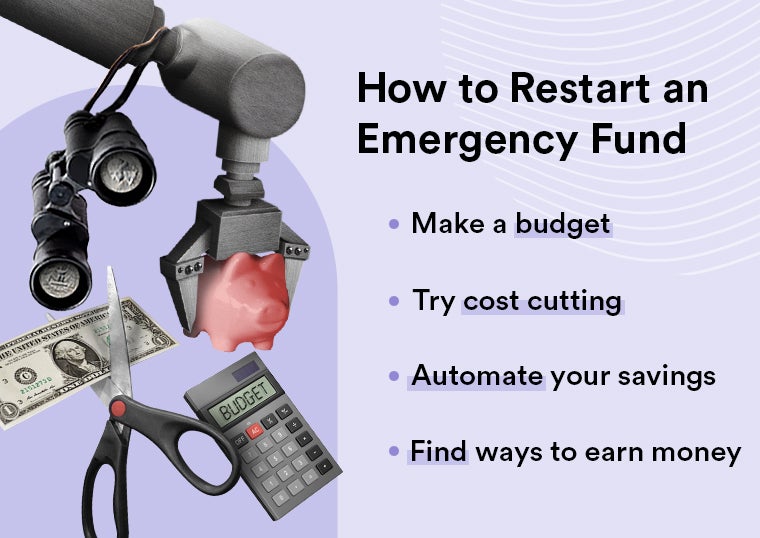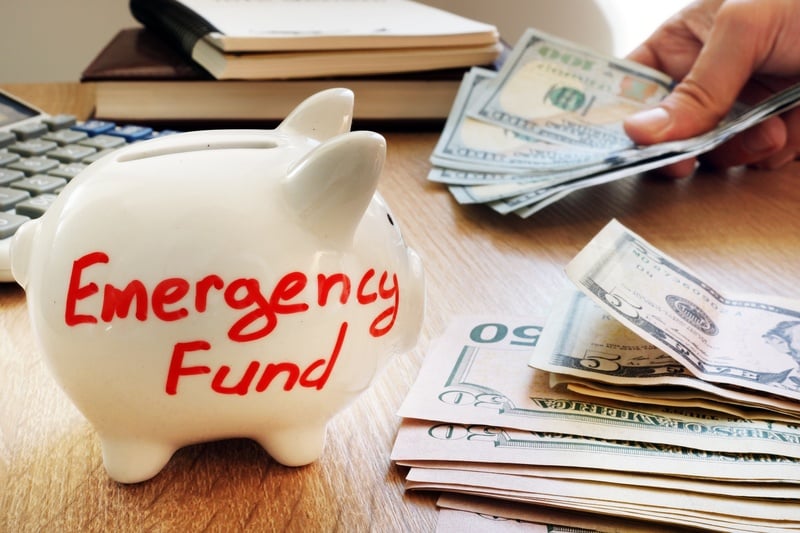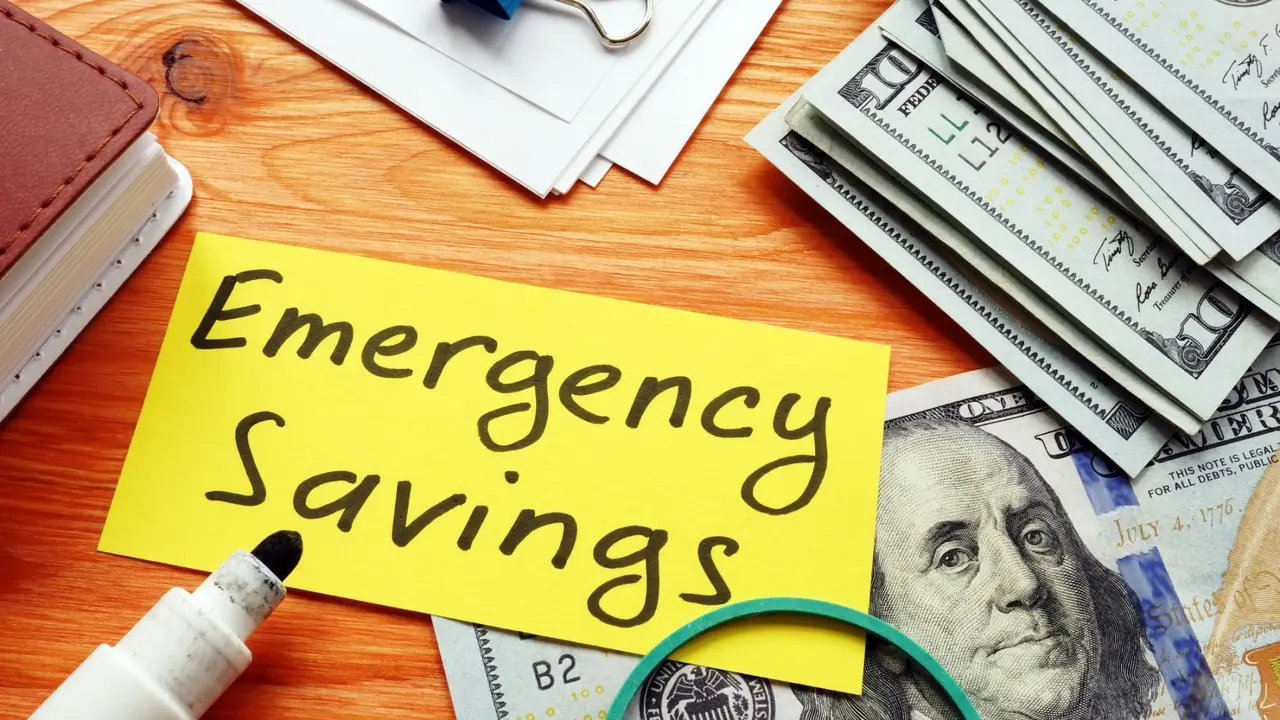
How to Build an Emergency Fund From Scratch
Written: Editor | July 27, 2023

Building Your Emergency Fund
Determining the amount to save in your emergency fund
When it comes to building an emergency fund, it's important to have a goal in mind. Financial experts recommend saving between three to six months' worth of living expenses. Consider factors like your monthly bills, rent or mortgage payments, groceries, and any other essential expenses. Analyze your current spending patterns to determine an appropriate amount to save.
Setting a realistic savings goal
Once you have determined the amount you need to save, it's essential to set a realistic savings goal. Break your target into manageable increments. For example, if you aim to save $10,000 in six months, that's around $1,667 per month or approximately $55 per day. Setting smaller goals makes it easier to track your progress and stay motivated.
Creating a budget to save for emergencies
To successfully build your emergency fund, it's crucial to create a budget that prioritizes savings. Review your income and expenses to identify areas where you can cut back. Consider reducing discretionary spending and finding ways to save on essential expenses. Allocate a specific amount each month towards your emergency fund, treating it as a non-negotiable expense.
Remember, building an emergency fund requires discipline and consistency. Consider setting up automated transfers to ensure regular contributions to your savings account. Resist the temptation to dip into your emergency fund for non-emergency expenses. By taking these steps, you'll create a financial cushion that provides peace of mind during unexpected situations.

Strategies for Saving
Automating your savings.
When it comes to building an emergency fund, one of the most effective strategies is to automate your savings. Set up an automatic transfer from your checking account to a separate savings account on a regular basis. This way, you won't have to rely on your willpower to save money. It will happen automatically, without you even having to think about it. Start with a small amount that you can comfortably afford, and gradually increase it over time. This consistent saving will help you build a substantial emergency fund without feeling overwhelmed.
Cutting back on non-essential expenses.
To build your emergency fund faster, take a close look at your monthly expenses and identify areas where you can reduce or eliminate non-essential spending. This could include dining out less frequently, canceling unused subscriptions, or finding more affordable alternatives for certain products or services. By making these small sacrifices, you'll be able to redirect more money towards your emergency fund.
Increasing your income to boost savings.
If you're looking to accelerate your emergency fund growth, consider finding ways to increase your income. This could involve taking up a side gig or freelance work, asking for a raise at your current job, or exploring other opportunities for additional income streams. By earning more money, you'll have more available funds to contribute to your emergency fund.
Remember, building an emergency fund takes time and discipline. Be patient and stay committed to your savings goals. Having a well-funded emergency fund will provide you with peace of mind and financial security in case unexpected expenses arise.

Keeping Your Emergency Fund Secure
Choosing the right savings account for your emergency fund.
When building an emergency fund, it's important to choose the right savings account to keep your money secure. Consider these factors when selecting an account:
-
Liquidity: Look for an account that provides easy access to your funds when needed. Avoid accounts with restrictions or penalties for withdrawals.
-
Interest rate: Aim for a savings account that offers a competitive interest rate. While emergency funds are not typically meant for long-term investments, earning some interest can help your money grow over time.
-
Fees: Be aware of any fees associated with the savings account. Look for accounts that have minimal or no monthly maintenance fees.
Understanding the differences between checking and savings accounts.
Differentiating between checking and savings accounts is crucial for managing your emergency fund effectively. Here are some key differences:
-
Limited access: Savings accounts often have restrictions on the number of withdrawals you can make each month, which can discourage you from dipping into your emergency fund for non-emergency expenses.
-
Higher interest rates: Savings accounts generally offer higher interest rates than checking accounts, making them a better option for storing your emergency fund.
Tips for growing your emergency fund over time.
To ensure your emergency fund continues to grow, consider these strategies:
-
Automate savings: Set up automatic transfers from your checking account to your emergency fund. This will help you consistently contribute to your savings without having to think about it.
-
Reduce expenses: Look for ways to cut back on unnecessary spending to free up more money for your emergency fund. Consider reviewing your budget and identifying areas where you can make adjustments.
-
Set goals: Establish specific savings goals for your emergency fund. Having a target to work towards can help motivate you to save more and reach your financial security goals.
By choosing the right savings account, understanding the differences between checking and savings accounts, and implementing effective saving strategies, you can build a secure emergency fund that provides peace of mind during unexpected circumstances.

Utilizing Your Emergency Fund
Knowing when to use your emergency fund.
As a responsible individual, it is crucial to understand when and how to use your emergency fund. The purpose of this fund is to provide financial protection against unexpected expenses or emergencies. While every situation is unique, here are some common scenarios where using your emergency fund may be necessary:
-
Medical emergencies: Unexpected medical bills or sudden illnesses can put a significant strain on your finances. Your emergency fund can help you cover these expenses without resorting to high-interest loans or credit cards.
-
Job loss: If you experience a sudden loss of income due to job loss or redundancy, having an emergency fund can provide a safety net to cover your essential expenses until you secure a new source of income.
-
Home or car repairs: Major repairs or damages to your home or vehicle can be costly. Using your emergency fund in such situations can help you avoid taking on debt or delaying necessary repairs.
Examples of unexpected expenses that may require using the fund.
-
Unexpected travel: In the event of a family emergency or last-minute travel needs, your emergency fund can cover the costs of travel and accommodation.
-
Appliance breakdown: If a crucial household appliance such as a refrigerator or washing machine suddenly breaks down, your emergency fund can help cover the cost of repair or replacement.
Replenishing your emergency fund after using it.
It is essential to replenish your emergency fund after using it to ensure financial security in the future. Consider these strategies:
-
Create a budget: Review your spending habits and identify areas where you can cut back or save. Allocate a portion of your income towards rebuilding your emergency fund each month.
-
Automate savings: Set up automatic transfers from your paycheck or checking account into your emergency fund. This ensures systematic savings without relying on willpower alone.
-
Generate additional income: Consider taking up a part-time job or freelancing to supplement your regular income. Dedicate the extra earnings to rebuilding your emergency fund.
Remember, an emergency fund is an essential financial tool that provides peace of mind and protects you from unexpected financial hardships. Regularly review and adjust your fund size based on your personal circumstances and financial goals.

Growing Your Emergency Fund for the Future
Adjusting your savings goal as your financial situation improves.
If you've already started building your emergency fund, well done! As your financial situation improves, it's important to regularly reassess and adjust your savings goal. Start by looking at your current income, expenses, and financial obligations. Consider factors such as job stability, medical expenses, and any upcoming major life events. Set a new savings target that reflects your improved financial situation and provides a comfortable buffer.
Investing your emergency fund to maximize growth.
While it's crucial to have your emergency fund easily accessible, you may also want to explore options for maximizing its growth. Consider low-risk investment opportunities such as high-yield savings accounts or certificates of deposit (CDs). These options can provide a higher return on your savings while still keeping your funds relatively liquid. It's important to carefully evaluate the risk and potential return before making any investment decisions.
Re-evaluating and updating your emergency fund as necessary.
Life is unpredictable, and your emergency fund needs to adapt to changing circumstances. Regularly review your financial situation and make adjustments to your emergency fund as needed. Factors such as new financial responsibilities or changes in income should be taken into consideration. Aim to have at least three to six months' worth of living expenses saved, but be open to reassessing and increasing that amount based on your personal circumstances.
Remember, building an emergency fund is an ongoing process, and it's important to stay committed to your savings goals. With a well-funded emergency fund, you'll have peace of mind knowing that you're prepared for unexpected financial challenges that may arise in the future.

Conclusion
The importance of building and maintaining an emergency fund.
Building and maintaining an emergency fund is crucial for your financial well-being. It provides a safety net to protect you from unexpected expenses or income loss. By having a designated fund for emergencies, you can avoid going into debt or depleting your savings when unexpected financial challenges arise.
Key takeaways for successfully building your emergency fund.
-
Start small and set achievable goals: Begin by saving a small amount from each paycheck and gradually increase your contributions over time. Set realistic targets to ensure steady progress.
-
Automate your savings: Set up automatic transfers from your checking account to a separate savings account specifically for your emergency fund. This way, you won't be tempted to spend the money earmarked for emergencies.
-
Cut unnecessary expenses: Evaluate your spending habits and identify areas where you can reduce costs. Redirect those savings towards your emergency fund.
-
Prioritize your emergency fund: Treat it as an essential expense and prioritize it over other non-essential purchases. Consistency is key in building a secure financial cushion.
Resources and tools to help you on your journey.
- Mint: This app can help you track your expenses, set budget goals, and create a plan for building your emergency fund.
- Personal finance books: Books like “The Total Money Makeover” by Dave Ramsey and “Your Money or Your Life” by Vicki Robin and Joe Dominguez offer valuable insights on personal finance and saving strategies.
- Financial advisors: Consider consulting with a financial advisor who can provide personalized guidance on building an emergency fund and other financial goals.
Remember, building an emergency fund requires discipline and patience. Start today and take control of your financial future.



